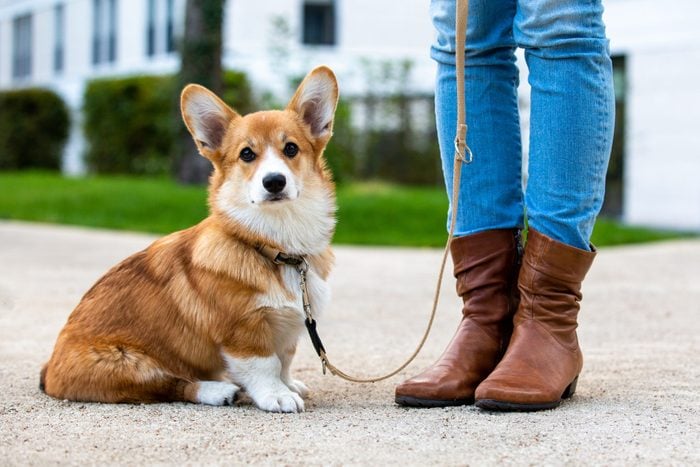
Cute pups come in small packages
You know dogs come in all shapes and sizes, but there’s something especially “aww”-worthy about short-legged dogs. Sure, they may not rank as the fastest dog breeds, but the way they waddle across the room to get some snuggles from you, and the way their entire torsos wiggle back and forth when they greet you at the door, is irresistible.
Here’s the science stuff: The same mutation causes short legs, or chondroplasia, in all dogs from short-legged breeds. This mutation results in abnormally short legs but normal-size bodies. These dwarf dogs, as they’re called, are not the same as small dogs, whose bodies are in proportion to their legs.
Whether you’re in the market to adopt a new pup or you simply want to learn about cute canines, we’ve put together a handy guide on the most popular dog breeds with short legs.
Get Reader’s Digest’s Read Up newsletter for more cleaning, humor, travel, tech and fun facts all week long.
| Reviewed for accuracy by: Caroline Coile, PhD, an award-winning journalist specializing in canine breeds, health and science. She’s the author of 34 books, including Barron’s Encyclopedia of Dog Breeds. |
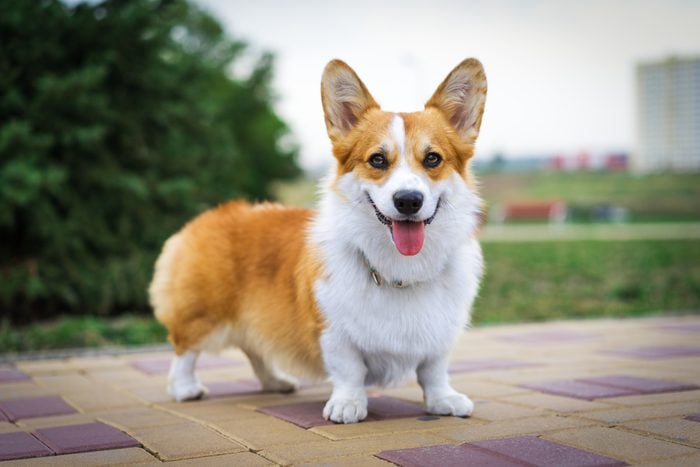
1. Pembroke Welsh corgi
Beloved by Queen Elizabeth, the smart and lovable Pembroke Welsh corgi is among the world’s most popular herding dogs. Although the Pembroke’s legs are small, its muscular thighs and strong chest make for one powerful pooch. This corgi breed is also notably easy to train and is known for being hardworking and full of energy.
These qualities, paired with its vigilance and independence, also make the Pembroke Welsh corgi a fine guard dog. Another perk about this breed is that it’s relatively easy to groom: Their thick double coat comes in four different colors (with or without white) and only requires grooming every week.
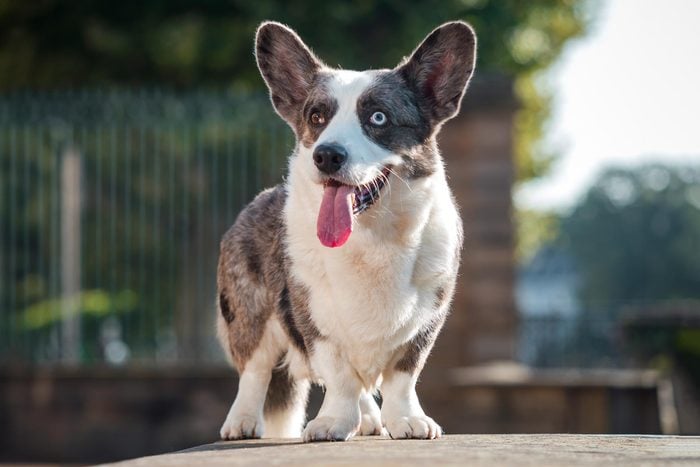
2. Cardigan Welsh corgi
Not to be confused with the Pembroke variety we detailed above, the slightly larger Cardigan Welsh corgi is smart, loyal and notably affectionate. Besides a difference in size, compared with the Pembroke, this breed’s ears are larger and more rounded; its front feet point out more; it comes in more colors; and it has a distinct, long, foxlike tail. In addition to its adorable appearance, the Cardigan Welsh corgi is good with kids and has a very approachable and affectionate demeanor.
This breed needs plenty of mental stimulation and is quite energetic, so make sure to pencil in plenty of playtime if you own one. They are also seasonal shedders that need to be brushed at least once a week to maintain a shiny and healthy appearance.
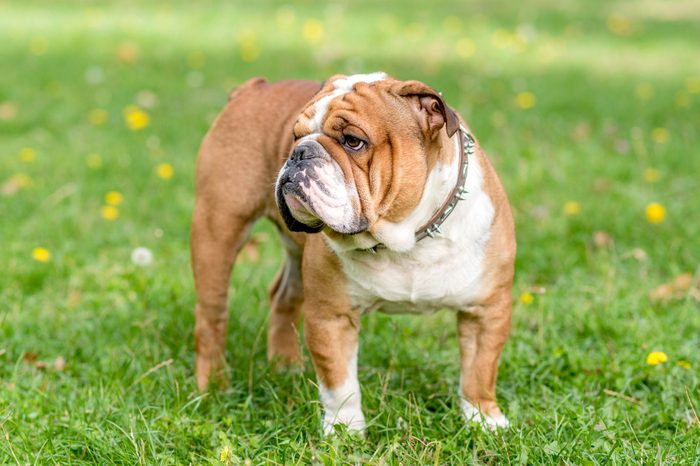
3. Bulldog
Stout, gloriously wrinkled and ever loyal, the bulldog is another one of the most popular short-legged dogs. The bulldog’s ancestors were bred to fight bulls, but bulldogs have since become gentler, more friendly companions and are known as one of the calmest dog breeds. These small muscular dogs can weigh up to 50 pounds and—though they may not look it—do need about an hour of moderate exercise every day.
Also note that their short snout can sometimes make breathing more difficult during warm, humid weather; the American Kennel Club (AKC) recommends keeping them indoors in the summertime, as they are extremely prone to overheating. Their smooth shiny coat is naturally clean, though it benefits from a proper wash every four weeks. Any deep wrinkles must be kept clean and dry so they don’t harbor infections. A soft brushing at least once a week will also keep this dog dashingly handsome and happy.
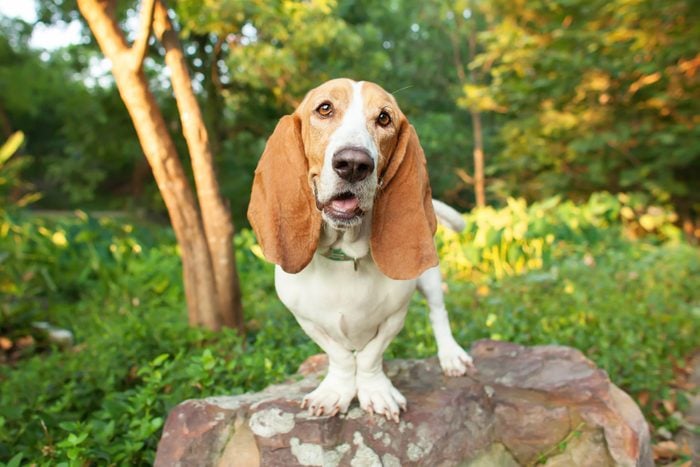
4. Basset hound
Hear that? It’s the familiar crooning of the basset hound, a larger-than-life pup with droopy features and short, thick crooked legs. Compared with other short-legged dogs, the basset hound is a larger medium breed, weighing in anywhere from 40 to 65 pounds. This recognizable breed is most well-known for its drooping face, sagging eyes and long floppy ears.
Like most hound dogs, basset hounds are pack dogs built for distance—not for speed. What they lack in miles per hour, though, they make up for in their incredible sniffing abilities! A basset’s short, smooth hair needs to be brushed a few times a week to control shedding. They also require an occasional bath, and their deep wrinkles must be kept clean and dry to avoid infections.
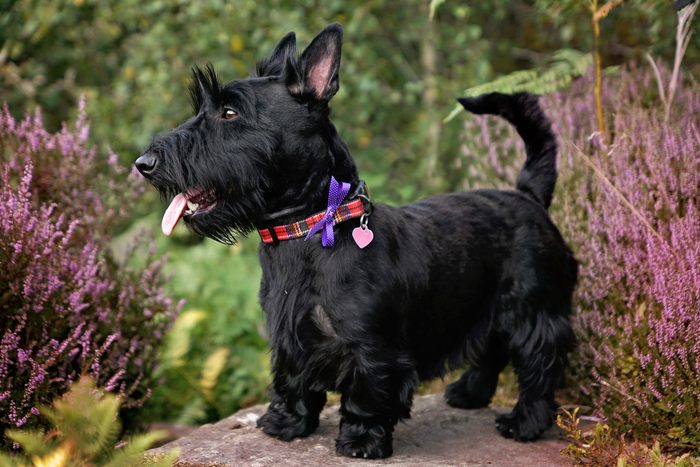
5. Scottish terrier
Distinguished, charming and independent, the iconic Scottish terrier has an appearance that gives the impression of a formidable pup in a petite package. Their keen awareness combined with strong hunting instincts make Scotties exceptional watchdogs. Like other terrier breeds, Scottish terriers are known for their spunky energy and lively personalities—they need some playful exercise and benefit particularly from small bursts of action-packed play throughout the day.
The Scottish terrier’s dual coat is one part wiry topcoat and one part soft undercoat. It benefits from regular grooming and should also be brushed two to three times a week to help manage shedding.
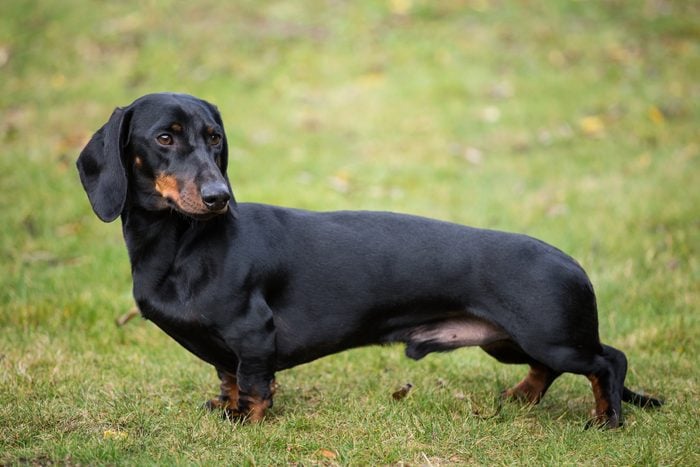
6. Dachshund
The Dachshund is a brave, strong-willed and curious German breed with an iconic, unmistakable appearance. Though we know them better as lounge-happy house pets, their short legs enable them to fit into tight underground burrows and to push through undergrowth when hunting. In fact, their name even translates from German to “badger dog” (one of their top prey). These traits also make Dachshunds notable watchdogs.
This tough breed is quick to let out a bark at strangers and packs a deceiving amount of energy—they require lots of activity throughout the day. Dachshunds come in standard and miniature sizes, and their coats can be longhaired, wiry or smooth. Their occasional shedding requires regular brushing.
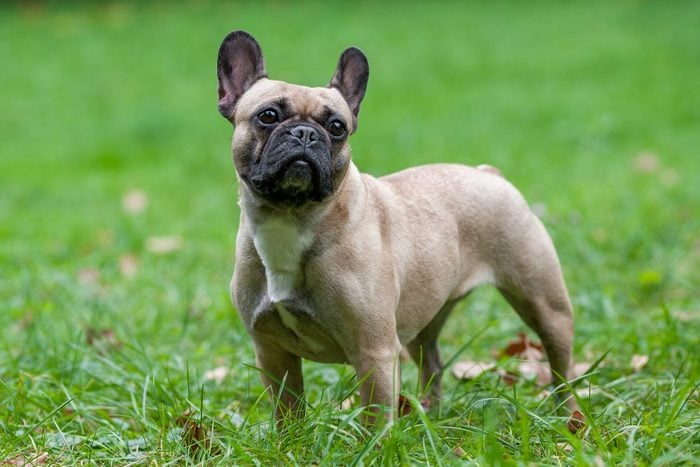
7. French bulldog
Like bulldogs, the French bulldog—referred to as a Frenchie—also has a square, wrinkled and flat face. This breed’s most distinguishing feature, beyond its stout frame and short legs, is its set of large, wide ears that are stiff and pointed upward. The AKC describes French bulldogs as being playful and adaptable, meaning that they can get along with just about anyone, including other animals.
Because they’re a lower-energy pup, French bulldogs only need a good short walk each day to remain healthy, which makes them excellent apartment dogs. Also note that their flat face can create some breathing difficulties with too much activity or hot weather. Weekly brushing paired with the occasional bath can help manage this breed’s minimal shedding.
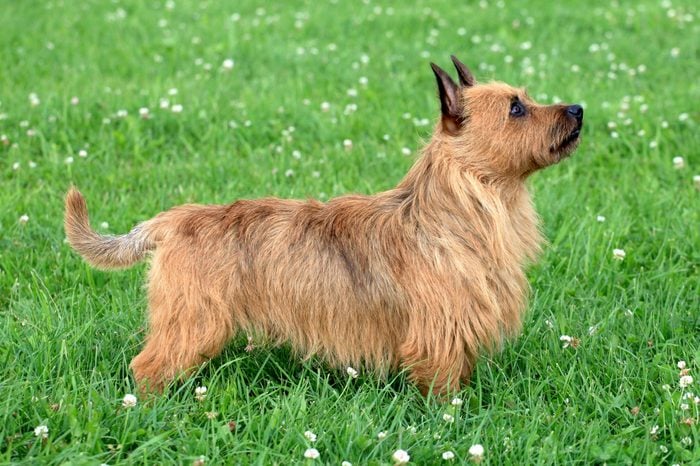
8. Australian terrier
As a member of the terrier family, this Australian dog breed is a feisty and energetic dog packed in a petite frame. They love digging, chasing small critters and spending most of their time with their own humans. With a long and strong body, this breed is no stranger to hard work; owners may be hard-pressed to control this breed’s urge to chase and hunt small vermin. That’s a plus if you’re in need of a pet to keep the field mice away, but it can turn into a nuisance if you’re trying to maintain a manicured lawn.
These dogs with short legs have a long, weatherproof double coat around their neck and legs and much softer fur on their head. Their coat rarely sheds, and it only needs a good brushing once a week to maintain its appearance.
Why trust us
At Reader’s Digest, we’re committed to producing high-quality content by writers with expertise and experience in their field in consultation with relevant, qualified experts. For this piece, Wendy Rose Gould tapped her experience covering pet care and behavior, and then Caroline Coile, PhD, an award-winning journalist specializing in canine breeds, health and science, gave it a rigorous review to ensure that all information is accurate and offers the best possible advice to readers. We verify all facts and data, back them with credible sourcing and revisit them over time to ensure they remain accurate and up to date. Read more about our team, our contributors and our editorial policies.
